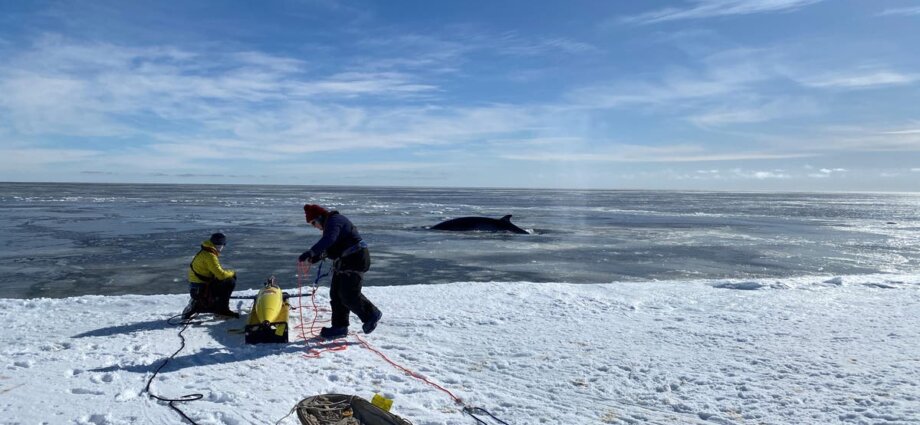Hoping to collect data on the Southern Ocean’s Ross Sea, scientists deployed Marlin, an autonomous underwater vehicle, two years ago. However, it got stuck under an ice shelf.
Not all was lost as the robot dove and took measurements in the water.
But, now that its data has been analyzed, an even more worrisome showing temperature rises in one of the largest Antarctic ice shelves.
“While the temperature increase – four-thousandths of a degree a year – might not seem all that much, it could lead to around 20 to 80 cm of additional ice loss per year over the 45 years we look at,” Dr. Peter Sheehan said in a statement. Sheehan was the lead author of the findings, which were published Friday in the journal Science Advances.

Marlin was released from the edge of the sea ice along the Ross Sea, carrying a range of sensors. The glider was supposed to travel northward into the open water – but Marlin became caught in a southward-moving current and got stuck underneath the Ross Ice Shelf.
It remained there for four days before re-emerging, completing nearly 80 dives and taking measurements of the surrounding water in the ice shelf cavity. Marlin dived down more than 655 feet, reaching the base of the shelf.
The result of Marlin’s unplanned observations was major for researchers at the UK-based University of East Anguila. For the first time, the research revealed how a major Antarctic ice shelf has been subjected to increased melting by warming ocean waters over the last four decades.
The group recorded a 164-foot-thick “intrusion” of relatively warm water that had entered the cavity where Marlin was stuck. Water temperatures ranged from -1.9 degrees Celsius to -1.7 degrees under the ice. Further analysis determined that heat moving into the cavity has increased over 45 years, likely due to climate change and warming of the Ross Sea.
“We found the waters of the intrusion were warm enough to melt the underside of the ice shelf, unlike the freezing-point waters they likely displaced,” Sheehan explained. “What’s new here is that we can track the warm water pretty much from the open water of the Ross Sea at the ice front, back into the cavity. We have not seen one of these intrusions happening directly before.”
Antarctica is rapidly warming due to climate change – and at a rate much faster than the rest of the world. Temperatures have increased by almost 3 degrees over the past 50 years, with glaciers experiencing an accelerated retreat. According to NASA, between 2002 and 2023, Antarctica’s ice sheet annually shed approximately 150 gigatons of ice, causing global sea level to rise by 0.4 millimeters per year.
More than 40 percent of its ice shelves have shrunk since 1997, according to researchers at the University of Leeds. While melting floating ice does not substantially raise sea levels, ice shelf thinning works to destabilize the Antarctic ice sheet.

The study also found that heat that flows into the shelf’s cavity has increased due to Ekman currents: wind-driven surface currents that also carry heat.
Using measurements of wind and ocean temperatures over the last 45 years, Sheehan and co-author Professor Karen Heywood were able to determine heat sent into the cavity by the currents has increased. It is likely because the Ross Sea has warmed, with winds transporting more heat now than in the past.
“It appears reasonable to expect that the magnitude of the Ekman heat flux, and of the melting that it drives, will increase yet further as climate change drives continued ocean warming,” said Heywood. “This trend is a concern in itself.”











